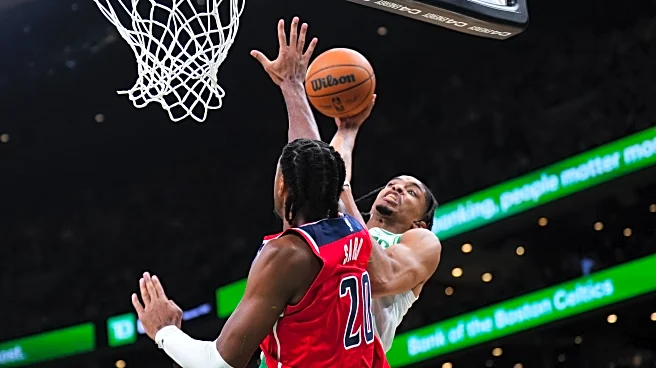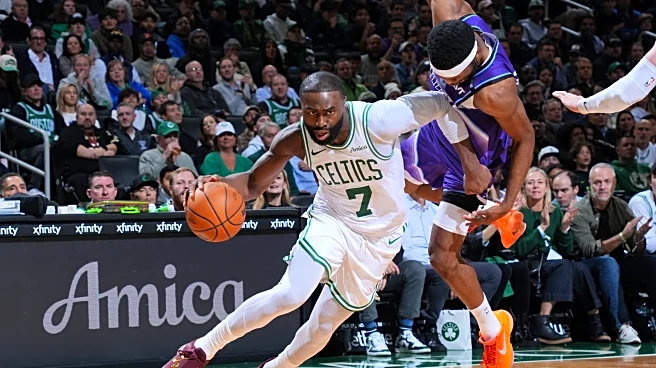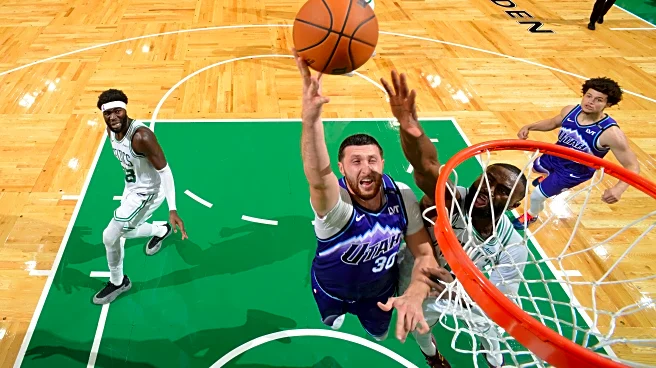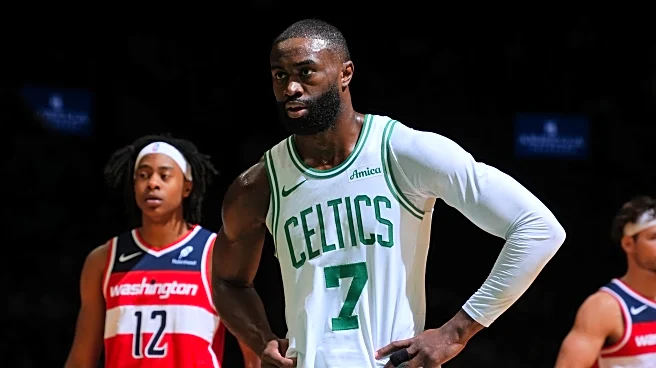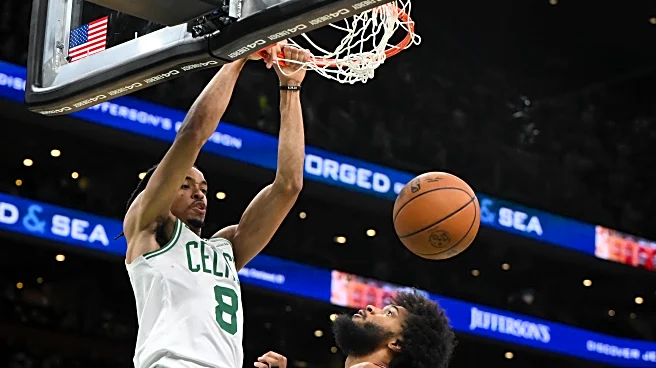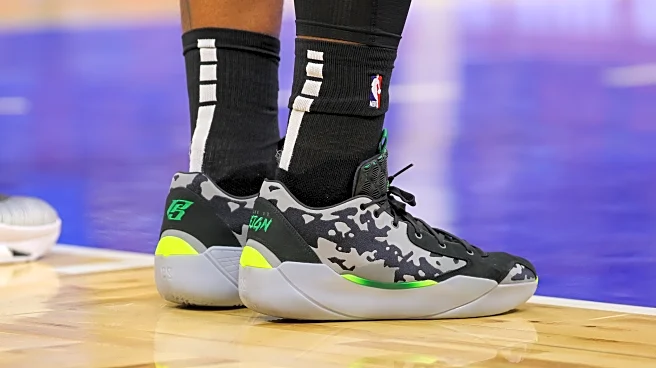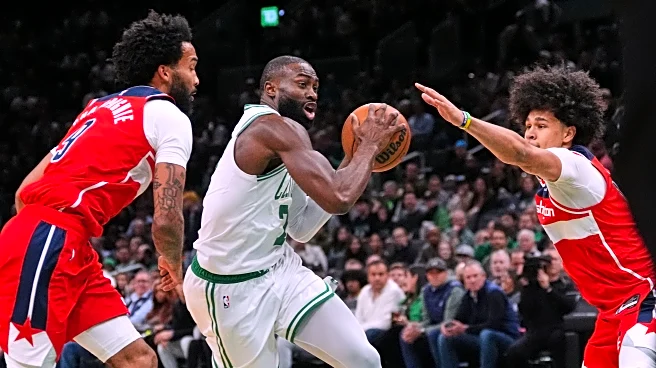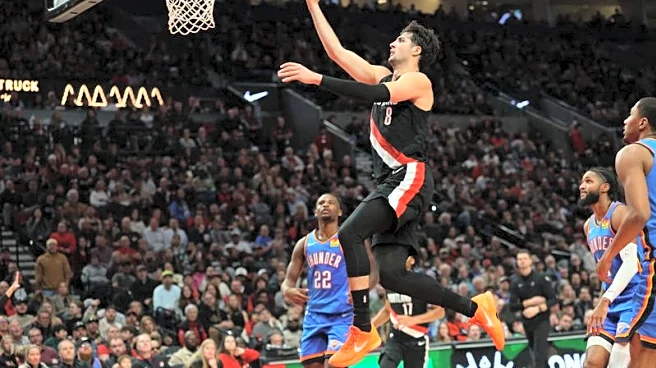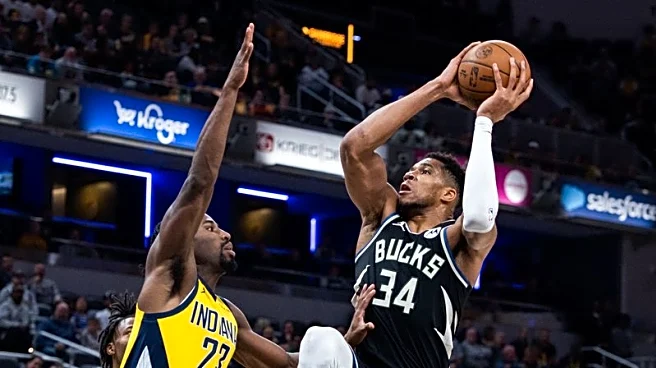Prior to Boston’s 136-107 runaway win over the Wizards on Wednesday night, the Celtics had utilized a true small ball lineup combination two times for a grand total of seven minutes.
Against the Wizards, they used six different combinations for 16:37, with each quarter seeing at least one different lineup variation. And with those results came a mixed bag. Across all six combinations, Boston was ultimately 52-45 in those minutes, effectively benefitting from the space afforded by its 5-out possibilities
but struggling defensively to protect the hoop and deny entry into the paint.
The results of one game won’t speak but so much truth to how effective this philosophy could be for Boston, whose frontcourt rebounding woes have been well-documented so far this season, but it was in all likelihood the best time for them to experiment further with their rotation.
Unlike experimentation against someone like Utah who has no issues throwing out lineups with multiple 7-footers, the Wizards are an optimal team to experiment a small ball lineup on. They are, like Boston, a team that relies on one-big lineups often featuring either Alex Sarr or Marvin Bagley, hardly the league standards for glass-crashing. Entering the game, Washington had the second worst contested rebounding percentage in the league (26.9%) and third lowest opponent rebounding (48.8).
There’s a lot to unpack from Boston’s time spent without a traditional big on the floor, so let’s take it quarter by quarter with this lineup minification.
First Quarter
Time on the floor: 1:41
Lineup: Pritchard/Gonzalez/Walsh/Scheierman/Minott.
Result: 6-6
Trailing 31-20 with Washington on a 9-0 run, Joe Mazzulla’s first use of a small lineup showed the floor-stretching possibilities that can be created when an opposing big, in this case Bagley, doesn’t want to abandon the paint.
Minott, playing the 5 in each lineup iteration we’ll highlight, immediately gets space at the top of the arc, popping out of a stagger screen to fire a clean look that Bagley barely gets a hand up to contest on. Immediately after, Minott fires from the same spot with similar space created by Pritchard’s penetration, which again holds Bagley near the nail, keeping him too far from really affecting Minott’s shot. These were Boston’s first two made threes of the game after an 0/8 start.
The defense, which switched everything, would see its lack of size come into play on a Bagley putback, which would be a sign of interior struggles to come for their other five lineups in this game.
This stint was ultimately the shortest we’d see, and it was also the only time we’d see them go small while trailing.
Second Quarter
Time on the floor: 2:02
Lineup: Pritchard/White/Brown/Scheierman/Minott
Result: 9-9
Opting to use four of their starters in this small ball iteration, the Celtics led 47-41 and were on a 21-4 run when they shrunk the lineup for a second time, again doing so with Bagley as the center.
A trend we’d start to see more frequently is the possession starting with Minott as a screener, while the rest of his teammates stretch out to the perimeter. It generates a productive and quick possession on this clip below, where he slips a screen for White, who’s blitzed but has plenty of space to hit a rolling Minott. Minott gets fouled by the collapsing help, and it’s two free throws to start for this group.
On the other end, this lineup gave up two buckets at the rim against drivers, one where Minott picked up the switch on Corey Kispert who scored through the foul, and another where C.J. McCollum attacked a Baylor Scheierman switch. The McCollum clip in particular shows the biggest drawback of these lineups. Washington had no problems forcing Minott to switch off Bagley or keep him attached to a perimeter player, in this case a well-positioned Kispert on the slot to keep Minott too far from a stunt-and-recover without giving up an open look to a good shooter.
It also means that whoever has to defend the ball is likely doing so without the benefit of a rim deterrent behind them. Such was the case for Scheierman, who can’t keep up with the drive and fouls McCollum on the way to a 3-point play.
Third Quarter
Time on the floor: 4:25
Lineup: Simons/Brown/Hauser/Walsh/Minott (Pritchard inserted for Brown at 2:09)
Result: 12-10
Now up 20 and again focusing their attention on Washington’s Bagley-fronted lineup, Boston’s third combination faced a classic 2-3 zone for the better part of this third quarter stint. Not exactly a look you’ll see every day at this level, but Boston’s offense operated effectively with two creators like Anfernee Simons and Jaylen Brown.
In their first possession, it’s another Minott screen that initiates the action, which allows Brown to attack Washington’s high pickup points with an easy read to Simons on the opposite wing. Washington’s rookie lottery pick Tre Johnson commits heavily to defending a Brown drive, and he’s not able to recover in time to stop Simons’ quick-trigger three.
We also see how this spacing opens up isolation play for Boston. When Pritchard checks in for Brown, he gets this ideal situation with Johnson defending him and Minott holding Bagley in the corner. Washington at first lines up its help around the paint to offset Pritchard’s initial drive, but it’s the subtle lift up of Minott that really allows Pritchard to operate with a clear path to the basket. Bagley has to account for Minott here, and it’s great work from Boston’s “center” forcing him into a tough situation.
With how switch-heavy a lineup of this nature has to be in order to keep an opponent from attacking the paint, communication is absolutely paramount to erasing mismatches, and this lineup struggled in that department. Handing off your assignment to a teammate has to be seamless and everyone has to be on the same page.
On this clip, Washington does a good job of clearing the paint with Bagley setting up shop on the elbow. Brown anticipates Kispert taking the Bub Carrington screen here, but is caught off guard when he cuts into the space in the paint. Hauser takes the switch, but is a step slow to react, losing leverage and fouling Kispert on the way to another 3-point play.
This possession was a worse case of miscommunication leading to a breakdown. When Malaki Branham cuts into the paint, you see Sam Hauser point to the space he wants Walsh to occupy. Walsh, watching the ball, doesn’t see the cut until the ball’s about to hit Branham in the hands, and it’s another point blank finish for Washington’s bench unit.
Fourth Quarter
Time on the floor: 8:29
Lineup: Simons/White/Hauser/Gonzalez/Minott (Walsh inserted for White)
Result: 25-20
Funny enough, this was the first time we see them use a small lineup with Sarr on the floor, who doesn’t stay out there too long with the game close to garbage time.
This stretch was the longest for a small unit and easily the most successful, led in large part by Simons’ confident play attacking the open space in the halfcourt. Simons scored 13 of his 18 points in this quarter, and this clip below is the one that left the biggest impression on me as to the power of a small lineup’s pace.
Here he takes full advantage of Sarr matching up with him to start the possession, initiating his drive at the 20-second mark, wisely noting a slower-footed defender and a completely unoccupied paint behind him. Sure, your own defense is susceptible to being attacked with these lineups, but there’s also opportunity for your playmakers to hunt for their own seals, something we haven’t seen too much of this year aside from Brown.
Here’s another instance where Sarr is picked on before checking out. He’s slightly chipped by a Gonzalez cut, which certainly plays a factor in him being so slow to contest the Minott three, but it’s where he starts the possession that’s important. He does not want to be on the slot guarding Minott in any capacity. Even if he isn’t hit by Hugo, he’s still likely to be a step too slow to stop Minott from getting an easy look.
It is worth noting that the trend of switch communication did still prove to be an issue for this group, and it’s clearly something that needs work if we are to see more of these lineup variations. This possession particularly drew a heated response from Mazzulla. Minott should be taking the switch here, but stays tied to his man, leaving Walsh to play catch up as Branham strikes for another layup.
It’s hard to tell how often we’ll be seeing these kinds of lineups over the course of the season, but what Game #9 tells us is that the rotation is not set in stone. Thinking otherwise is simply small-minded (pun intended).
